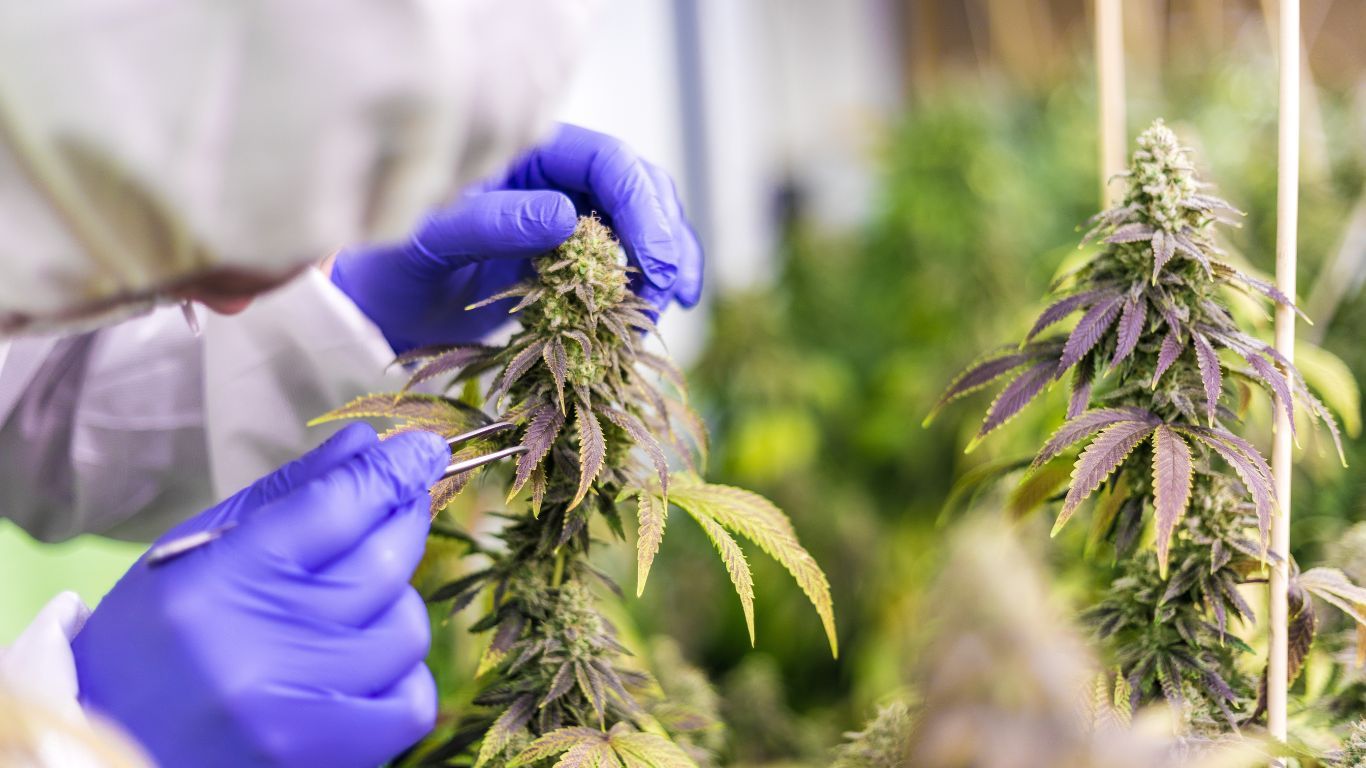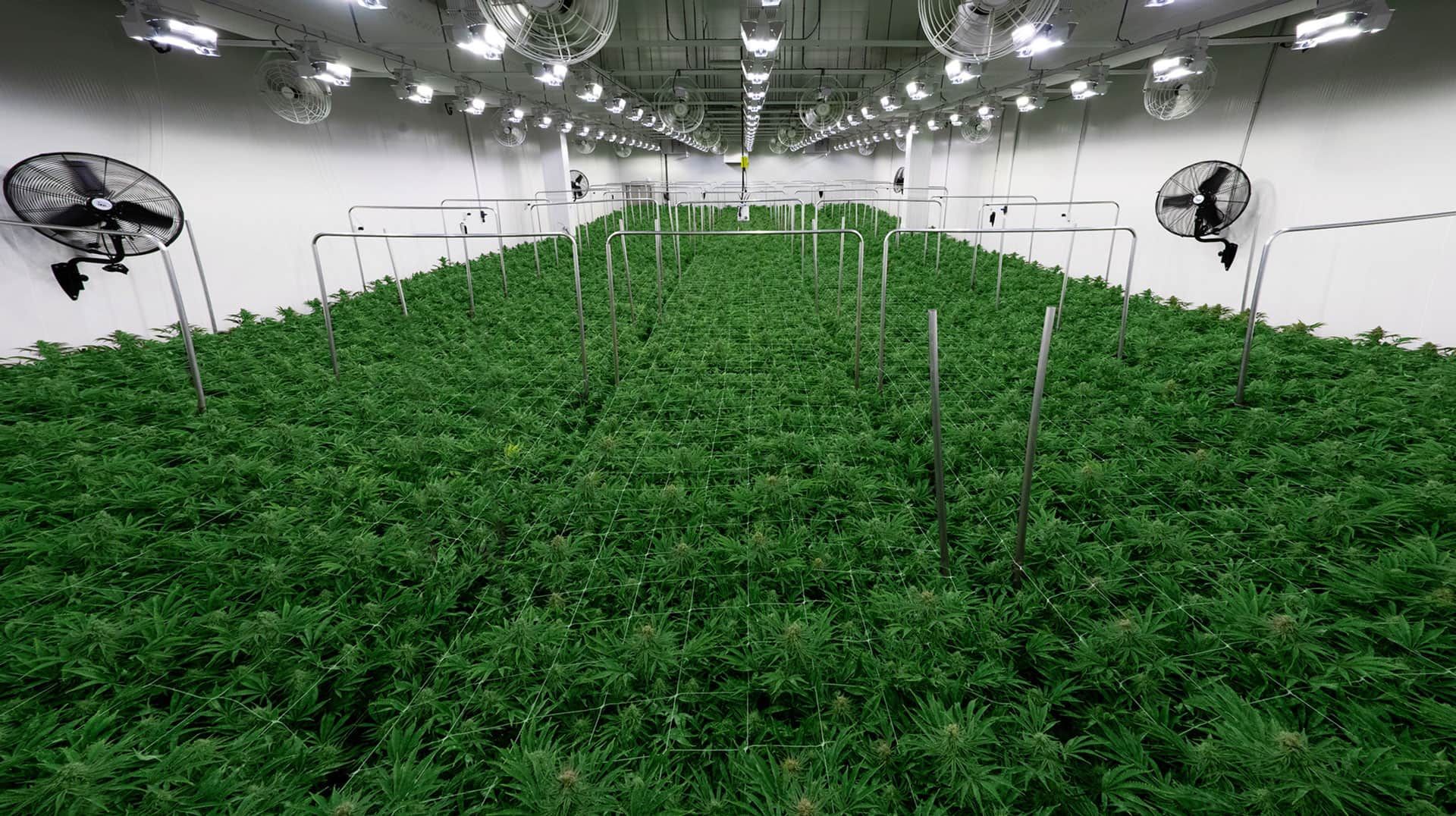
Why Living Soil?
Organic cannabis hits different.
When properly grown and cured, the complexity of flavour and effect is hard to beat. This aesthetic difference can be attributed to the diversity of nutrients and probiotics available in living soils.
Nutrient diversity fuels the biosynthesis of complex compounds like terpenes and flavonoids that contribute to cannabis quality.
Growing organic cannabis is not rocket science, but there is some science involved.
The basics of growing in living soils are the same if you are growing five plants or five acres. If you invest a bit of time to better understand what is happening in the root zone, your quality and yields will improve.
Living Soil Plants have co-evolved with soil microorganisms for millions of years. Cultivation systems that leverage these ancient relationships are known as living soil systems. For small-scale growers, organic cultivation doesn’t need to be complicated. Cannabis plants have been growing in living soils since long before we showed up, and will thrive in fertile garden beds. If you are growing in containers, start with the best potting soil you can find, or make your own living soil mix.
Growing in organic soil is also a cost-effective way to cultivate distinctive cannabis at commercial scale in a market flooded with mediocre weed.
Consumers might not appreciate the complexities of cultivation systems, but they vote with their dollars, and organic herb is in high demand.
Root Exudates
During photosynthesis, plants absorb carbon dioxide and make carbohydrates. Up to 40% of this energy is shared with soil microbes as root exudates. These carbon-rich exudates are composed of simple sugars and organic and amino acids.
These microorganisms don’t have access to atmospheric carbon and provide plants with nutrients and other benefits in exchange for this valuable energy source.
Plants can influence soil PH and share exudates selectively with the microbial communities that provide for their needs.
Learn more about Root Exudates in this peer-reviewed paper.
Roots, soil, and microbes create a densely populated habitat known as the rhizosphere.
Soil Food Web
The soil food web is composed of interconnected kingdoms of life that cooperate, compete, and consume each other.
- Bacteria– These single-celled organisms are abundant in healthy soils, and populations can double every 15 minutes.
- Fungi– Fungi form hyphal networks which enable nutrient transport within the soil and communication between plants.
- Nematodes– Nematodes are microscopic worms, many of which feed on plant roots.
- Protozoa– Protozoa are microbes that swim through soil water, feeding on bacteria.
- Worms– earthworms consume decaying materials and inoculate them with beneficial gut bacteria.
- Insects– Many insects spend part of their lifecycle in the soil. Some of these are detritivores and consume decaying materials; others are herbivores and can emerge from the soil to feed on your plants.

Suppressive soil
Healthy soil makes healthy plants. For organic growers, a balanced and diverse soil biome plays an important role in pest suppression. Microbes can suppress pests and diseases in many ways:
Competition – Beneficial microorganisms can outcompete pathogens for food sources and physical habitat.
Parasitism – Bacterial and fungal microbes can parasitize plant pests, including nematodes and soil-dwelling insects.
Chemical Warfare – Some microbes produce metabolites and volatile organic compounds that inhibit pathogen growth.
Immune Response – Microorganisms can solicit plant immune responses through hormone signalling pathways.
Predation – Some bacteria practice wolf pack predation to feed on outnumbered prey.
Soil chemistry can also contribute to pest suppression. Nutrients like Silicon and Chitosan strengthen cell walls and aid chemical defence.
Cannabis Nutrients
Cannabis is a heavy feeder and is often cultivated in controlled environments.
The economics of these growing conditions favour high planting densities and short crop cycles.
In addition to the initial nutrient charge provided by living soil, supplemental feedings during crop development can improve plant performance, and enable the use of lower soil volumes.
Slow-release organic nutrients can be supplied by compost and dry amendments.
Liquid or soluble nutrients can also be fed during periods of rapid crop growth.
Liquid Nutrients

Many organic fertilizers are biostimulants which provide plant health benefits in addition to available nutrients.
Cold-processed kelp inputs are rich sources of plant growth factors, such as cytokinins. These naturally occurring hormones benefit plant development and stress coping.
Fish hydrosolate fertilizers are great sources of amino acids and beneficial bacteria. Plants make amino acids from Nitrogen, but they can also uptake them directly from the soil and save the energy.
Soluble organic nutrients are usually micronized to increase surface area and can be suspended in a liquid solution.
Organic fertilizers should never be fed through irrigation systems, or biofilm will accumulate and ruin your day.
Soil Amendments
Dry inputs are usually incorporated into soil mixes or applied early in the crop cycle to provide sustained fertility.
Protein meals are organic amendments with a high nutrient density. These products have been dried and milled to increase their bioavailability and storage life.
Mineral inputs are mined from natural deposits. Some of these inputs require a long time to mineralize and are better incorporated into organic mixes prior to planting.
Dry amendments can be blended to make slow-release fertilizers with specific nutrient ratios based on crop needs.
Mineralization of dry inputs requires water availability.
Fertilizer spikes can be applied by opening the soil profile with a knife and inserting dry blends for contact with soil water.
Nutrient amendments can also be top-dressed on the soil surface. Mulch application and surface irrigation provide water for mineralization.
Compost Inputs
Compost is an important fertility source created through the controlled decomposition of organic residues. Compost can be used to amend beds between crops or applied during the crop cycle. Commercial composters should provide a nutrient analysis for their product that includes the Carbon to Nitrogen (C:N) ratio.
This measure is a good indicator of Nitrogen availability. Garden compost should have a C:N ratio below 35, and nutrient-dense commercial composts can have a C:N ratio in the teens. If the C:N ratio of your soil is above about 30:1, microorganisms will start competing for the scarce Nitrogen rather than sharing it with your plant.
Compost should be pleasant smelling. Foul smells indicate that bad actors are off-gassing nutrients into the environment rather than keeping them in the soil.
Organic Chemistry
Chemical elements are the basic building blocks of all matter. (Remember the periodic table?) Some of these elements are nutrients required by plants and other organisms for energy and growth.
Cations are elements that maintain a positive charge due to their ratio of protons to electrons. Many plant nutrients are available as cations, including Calcium (Ca++), Potassium (K+), and Nitrogen (NH4+).
Positively charged cations bond with negatively charged soil at cation exchange sites.
Phosphorous (PO43-), Sulfur (SO42-), and Nitrogen (NO3-) are available as anions. Anions tend to be mobile and easily leached from soils, as their negative charge prevents storage on cation exchange sites.
Soil PH
Soil pH is a measure of the potential of Hydrogen in the soil water.
This determines the acidity or alkalinity of the soil and the availability of nutrients.
Cations like Calcium are basic and will raise the soil PH, while Anions are acid-forming and will lower the soil PH.
Slightly acidic soils in the PH range of 6-6.5 are ideal for cannabis cultivation. When growing with synthetic fertilizers it is important to adjust the PH of inputs. This is unnecessary when growing in living soils.
Liming agents containing Calcium ions are integrated into organic soil mixes to form bicarbonates which stabilize PH at a range of 6-6.5. This buffer allows the plant to steer the soil PH as required for nutrient availability.
Organic N-P-K

N-P-K is a measure of the available Nitrogen, Phosphorous, and Potassium in nutrient inputs. These fertilizer numbers are shown on labels as a minimum guaranteed analysis. These three elements are essential for plant growth and are the most commonly deficient in soils.
Nitrogen is abundant as an atmospheric gas and is converted to plant-available nitrates through decomposition of organic matter.
Nitrogen is required for the formation of amino acids, which are critical components of cells.
Phosphorous is a mineral element that is made plant-available by phosphate solubilizing microbes.
Phosphorous benefits root development and fruit set. It serves as a storehouse of cellular energy and is a structural component of DNA.
Potassium enters the soil through application of minerals like Langbeinite, and from the breakdown of organic materials.
Potassium has important functions in plant metabolism and stress adaptations.
Essential Nutrients
In addition to N-P-K, there are several other soil nutrients that are required in abundance.
- Calcium ions are critical for flower set and PH regulation.
- Magnesium is the central atom in the chlorophyll molecule.
- Silicon is a primary ingredient in cell walls and aids in plant defense.
- Sulfur is a building block for terpenes and other volatile compounds.
Micronutrients
Plants require trace amounts of many elements for optimal growth.
Mined products like greensand, basalt, and glacial rock dust contain a diversity of trace elements but can be slow to mineralize.
Some plants hyper-accumulate trace elements from the environment.
Alfalfa and Kelp meals can provide a diversity of accumulated micronutrients when used as soil inputs.
Cannabis is also a hyperaccumulator. This can be problematic as some trace elements are heavy metals that can cause compliance and health concerns in cannabis crops.
Silicon availability can limit uptake of heavy metals in many plants. This excellent academic overview is worth a read.
The soil environment’s ecosystems that favour rapid exchange between air and water saturation are known as interface zones and tend to be productive and diverse. Tide pools, estuaries, and the upper strata of living soils share this feature.
Irrigation water with high levels of dissolved oxygen (DO) fuels aerobic microbial activity.
Water should be kept between 60 and 70 degrees, and commercial growers will benefit from super-oxygenating their irrigation water with nanobubble generation.
Container design, mulch application, and irrigation practices promote soil fertility and protect feeder roots which proliferate in interface conditions.
Soil Porosity
Water infiltration and air exchange are enabled by pores of various sizes within the soil matrix.
Soil porosity is the percentage of soil volume that is made up of these pores. Air-filled porosity is the percentage of air that remains in the soil when it is saturated.
Pore characteristics are largely determined by the size and organization of aggregates and fibres in the soil.
Pore size regulates access of soil organisms to one another and to their resources.
Bacteria find refuge in micropores as protozoa and nematodes transit between linked macropores grazing on their brethren…
~Stewart Maxwell. Stewart is a cannabis crop consultant, and educator at ElevatedBotanist.com














